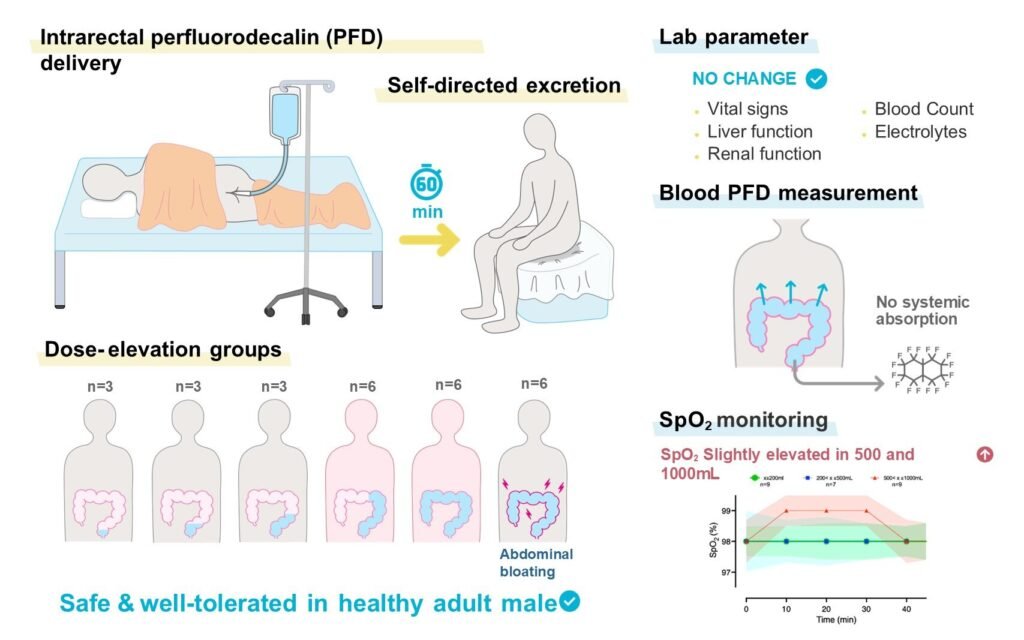The groundbreaking concept of “enteral ventilation” has taken a significant step forward with the publication of positive results from the first human clinical trial in the journal Med. Developed by Takanori Takebe, MD, Ph.D., and his colleagues, this innovative approach aims to deliver life-saving oxygen to the bloodstream through the colon, offering a potential solution for individuals with blocked airways or compromised lung function.
The idea behind enteral ventilation may sound unconventional, but its roots lie in nature and scientific innovation. Inspired by the loach fish, which can absorb oxygen through its gut in low-oxygen conditions, and building upon the work of researcher Leland Clark, Ph.D., who developed a perfluorocarbon liquid called Oxycyte, the concept of rectally delivering oxygen has shown promise in animal models and now in human trials.
The recent study involved 27 healthy men in Japan who held varying amounts of the oxygenated liquid for 60 minutes. While some participants experienced abdominal discomfort at higher volumes, no serious adverse events were reported, demonstrating the safety and tolerability of the procedure. The next phase of research will focus on determining the optimal dosage and duration of treatment to improve blood oxygen levels effectively.
Looking ahead, Takebe and his team hope to expand the application of enteral ventilation to newborn care, potentially revolutionizing how hospitals address respiratory emergencies. To support this vision, Takebe has founded EVA Therapeutics, a company dedicated to advancing this life-saving technology.
The progress made in the field of enteral ventilation represents a significant milestone in medical research and offers hope for patients facing critical respiratory challenges. By leveraging nature-inspired solutions and cutting-edge science, this innovative approach has the potential to transform emergency medical care and improve outcomes for individuals in need of immediate oxygen support.
For more information on this groundbreaking research, you can access the published study in Med and stay updated on the latest developments in enteral ventilation technology. The future of respiratory support may indeed lie in the unexpected, as the journey from an IgNobel-winning idea to a real-life treatment continues to unfold.


